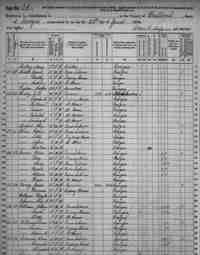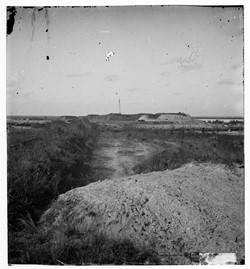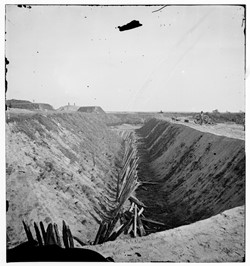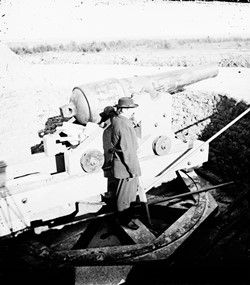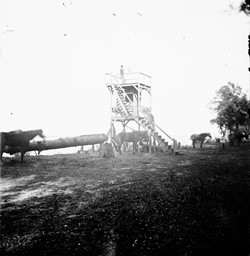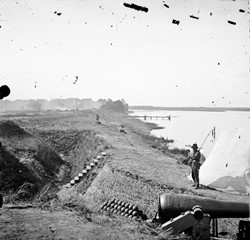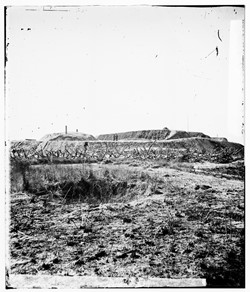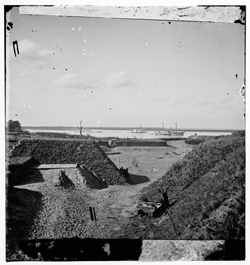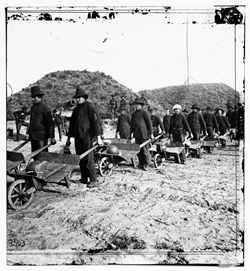John Bartow Hussey
Established the Georgia Family Line
John B left his home and family in Tarboro, North Carolina and never reestablished contact. Court records show on different occasions, such as when his father died, the family attempted and failed to locate him. What caused John B to leave and never return or write is a mystery.
Bulloch County, Georgia
Most of the migration into Georgia occurred further west Of Bulloch county in the Piedmont section of the state. When John B. came to the county it was said to be a primitive place. You can learn more about just how primitive here. Bulloch county was an unbroken pine barren whose greatest resource was said to be the two rivers that bounded its north and south borders. The land was not well suited to farming except along the rivers. What guided John B to Bulloch county is unknown.
The Masonic Lodge
John was a founding officer of the Masonic Lodge in Bulloch County, Georgia. The Ogeechee Lodge No. 213 of Free and Accepted Masons was organized under dispensation granted by the Most Worshipful W.S. Rockwell, Grand Master of Georgia, and the organization meeting was held April 24,1857 in the Union Methodist Church, which was located on the Old River Road that runs on the South side of Ogeechee River and across the river from Ogeochee, Georgia. At this April meeting John B. Hussey was appointed Worshipful Master and Richard Edenfield was appointed secretary.
John B. served as Worshipful Master during 1857 and 1858. Under his leadership a two-story building known as the Masonic Hall and Academy was erected at a cost of $785.58 . The lodge hall was located near the Union Methodist Church on land belonging to James Young, Sr. After James Young's death, the administrators of his estate sold to the Ogeechee Lodge 20 acres, that included the land on which the lodge hall stood, for the sum of $100. The Ogeechee Lodge was moved to it's current location in Statesboro to allow a new lodge to be formed in Rocky Ford.
Records indicate that John was a good farmer whose crops and level of production changed little over the years. He owned two slaves and raised corn and oats on 100 acres of cleared and improved land. The remaining land was unimproved and was used for pasture, timber and range land. He maintained a horse and only one mule. He consistently kept about 10 milk cows and 25 hogs. At various times he raised some goats, sheep and a few beef cattle. He kept bees and one year it was noted that he had over 100 chickens.John B married at
what would have then been considered late in life in 1859 at the age of 33. He added 400
acres of land
along the Ogeechee River in the northern most portion of Bulloch County just prior to his
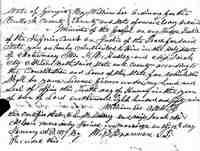
During the Civil War the Ogeechee lodge was staunchly supportive of the Confederate cause. In the minutes of the June 6, 1861 meeting the Junior Warden was "directed to prefer charges against an unnamed member of the lodge for deserting the Confederate Army and going over to the enemy". Brother William Donaldson Brannen was appointed "to ascertain all the testimony bearing on the case". Subsequently "Upon a motion made, seconded and carried that the deserted member be expelled from membership - debanning him from all rights of Masonry". The lodge continued it's activities throughout the war, meeting regularly. One exception was noted in the minutes - "In consequence of a raid made by the Federal Army [Maj. Gen. William Tecumseh Sherman] through this part of Georgia, no meeting was held in December 1864". The Ogeechee Lodge No. 213 of Free and Accepted Masons continues to this day and is said to be the strongest and most active lodge in the state of Georgia.
The Civil War comes to Eastern Georgia
As the casualties mounted and the grimness of the Confederate position grew, men who had not volunteered early in the war were pressured to join the cause and in some cases were conscripted. John B volunteered on May 8, 1864 at the age of 38 and was commissioned a Captain. He was assigned as the Commander, Company D, 1st (Symons') Regiment Georgia Infantry Regiment, Reserves. Company D saw no action until near the end of the war when General Sherman's March to the Sea campaign entered eastern Georgia. As the Union forces neared Savannah, Captain Hussey and Company D were assigned as part of the garrison of Ft McAllister
Establishing a base of supply on the coast was a major objective of Sherman's March to the Sea and as he approached Savannah his army was low on provisions and ammunition. Union ships carrying supplies stood off Savannah but were unable to off load them. The best choices for a supply base were Savannah, which had yet to be captured, or a location near the mouth of the Ogeechee River which was guarded by the Confederate guns of Fort McAllister.
Fort McAllister
Fort McAllister was a homely and unhealthy fortification located on the south bank of the river in Bryan County just south of Savannah. The earthen fort was built in 1861 and today is a State Park. Fort McAllister was attacked several times by Union ships, including the first ever Iron-clad ship battle with a shore installation. Unlike Fort Pulaski whose masonry walls could not withstand the Union rifled cannons, the thick mud and sand walls of Fort McAllister absorbed the shot and held through nine separate engagements with the Union Navy. The land approaches to the fort had been cleared and were studded with sharpened wooded stakes as well as crude land mines known as torpedoes. Even with these preparations the fort was not well situated or designed to defend against an attack from the land side.
Fort McAllister
Click an image to view larger
The Battle of Fort McAllister
As General Sherman (USA) surveyed Fort McAllister from the roof of a rice mill on Joseph McAllister's Strathy Hall plantation (later known as the Ford Plantation), it was manned by only 230 men. More than half of these numbers were artillerymen required to man the 24 cannons. A significant portion of the remaining garrison was infantrymen of Captain John B. Hussey's Company D. On December 13, 1864, General William B. Hazen (USA) who commanded 2nd Division, 15th Corp of Sherman's Army was assigned to capture Fort McAllister. With overwhelming numerical superiority, he maneuvered his troops on a line and charged the walls of the fort with nine infantry regiments consisting of approximately 800 men each, leaving eight regiments in reserve. The action was intense but Fort McAllister fell within fifteen minutes. The Union forces lost 134 men while the Confederate's lost 71.
Captain Hussey was captured and quickly shipped north. He spent the next six months in three different union prisons before being paroled on June 17, 1865.
Union POW Camps
Prisoner of war camps and prisons on both sides of the Civil War were wretched. Thousands of soldiers survived battles only to die from disease and starvation in confinement. John B. Hussey was held prisoner in three POW camps - Point Lookout. Maryland, Old Capitol Prison, Washington DC and Fort Delaware, Delaware.
Point Lookout, Maryland was the largest and most notorious of the Union POW camps and John B
was
fortunate not to spend much time there. The compound was about forty acres and was
surrounded by a
fourteen-foot high wooded fence.

As a point of perspective, Andersonville Prison was the most notorious Confederate Prison. It originally encompassed 16.5 acres and was designed for 10,000 prisoners. It was later expanded to 26.5 acres. At its peak the prison population was 33,000 Union POW's. During the prisons 14 months of operation approximately 49,485 prisoners were housed at Andersonville, of those 13,700 died of malnutrition, disease and exposure.
The Old Capitol Prison was a luxury hotel compared to the other prisons. Built as a tavern
and boarding
house in 1800, the building saw many uses over the years.
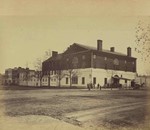
Fort Delaware was constructed in the 1850's on Pea Patch Island in the Delaware River and is
a pentagon
shaped granite and brick fort with 32-foot high walls surrounded by a 30-foot wide moat. The
entire island
was used as a prison camp during the Civil War and was sectioned off by wooded fences.
Crude, dirt floored
pine plank buildings were built with the exterior walls being simply planks standing
vertically on the
ground. While this was a step above Point Lookout, disease and starvation was still rampant.
The island was
for the most part at sea level and would have flooded daily were it not for a 12-foot high
stone and earth
dyke that ran entirely around the island. The main source of drinking water was rain run off
from the roofs
of the barracks, as the Delaware River is tidal at this point. During periods of no rain
this was a serious
problem. Death from disease,

Life After the War
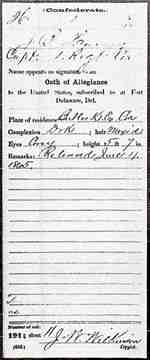
The civil war ended on April 9, 1865 when Gen. Robert E. Lee surrendered his Confederate troops to the Union's Ulysses S. Grant at Appomattox Court House, Virginia. John B was released after signing his oath of allegiance on June 17,1865. It was noted at the time of his release that his complexion was dark; hair mixed; eyes gray; height 5 ft, 7in and he resided in Bulloch County
While times were difficult
throughout the South following the war, there was some small advantage to being in a rural
